Room 237
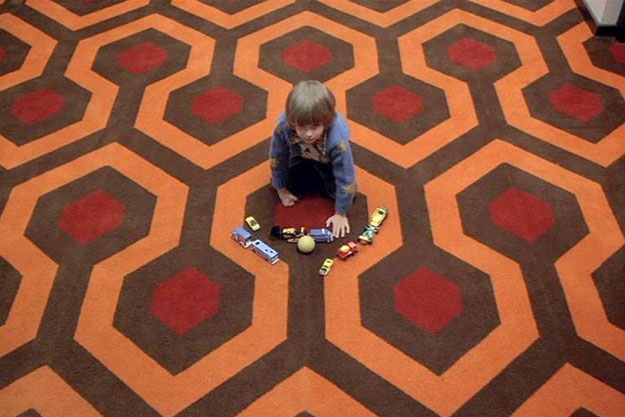
As much as I love movies, I own only a few. “The Shining” is one of that handful. It’s not even that I’d say it’s Stanley Kubrick greatest achievement; there’s just something about it that makes me keep coming back. The new documentary “Room 237” tries to tease out what's behind that strange tidal pull, and if anything deepens it. The movie makes the Overlook Hotel into a kind of three-dimensional system, a roamable area we can explore ourselves, looking for hidden meanings.
It’s fun to hear a theory about a movie, and it’s especially fun to see the evidence in the frame as the movie plays. In "Room 237," while we hear the voices of some of the wildest theorists of “The Shining,” we never see them. Instead their commentary is illustrated by clips, not only from "The Shining" but from movie history (Murnau’s “Faust” is used memorably). This disembodied effect is a bit unsettling, but it allows for the film to be about the theories, not the eccentrics themselves.
Now, some of the theories are of the sort you might hear advanced by someone on the train sporting a beanie with a propeller on top. There's the contention that Kubrick faked the Apollo moon landing footage for the U.S. government, and “The Shining” is his elaborately-coded admission/apologia. Or the belief that the film is about an alien race that is sexually aroused by human beings. As evidence for this latter, director Rodney Ascher freezes the frame on Stuart Ullman shaking hands with Jack. At the exact moment their hands meet, Ullman’s mid-body happens to merge with the spine of a binder on his desk, and schwing! He suddenly appears to be very happy indeed to see Jack.
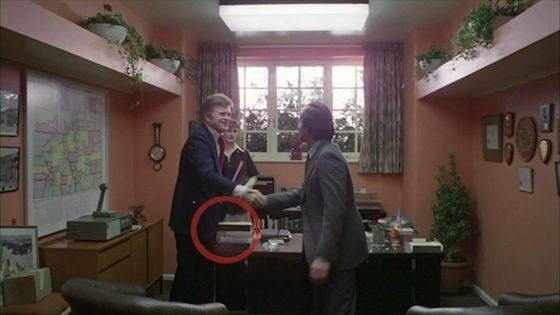
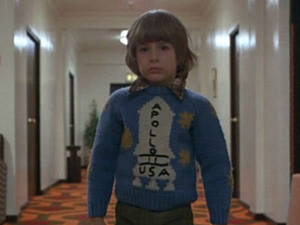
One fellow insists that Kubrick’s face can be seen in the clouds right after his name appears in the opening credits. We strain our eyes, but no heavenly Kubrick reveals himself, even though Ascher steps the frames of that great opening helicopter shot.
On the other hand, some of the analyses are really quite illuminating semiotic analyses. One man contends that the film is about the white man’s violent world conquest. His first clue was that Native American-head logo on containers of Calumet Baking Powder stacked in the pantry. It is about the blood-soaked past, the way "civilization" commits atrocities and then shoots them down the memory hole and stands behind a pretense of proper manners. (To paraphrase the exchange between Jack and Grady in that blood-red bathroom: Jack: I know you, Grady. You chopped your wife and kids up into little pieces. Grady, in the deferential, plummy tones of a good valet: I don’t have any recollection of that, sir.)
It’s just like pictures in a book, as Mr. Halloran says to Danny. (Or: history is a nightmare from which I am trying to awake, per Joyce’s Stephen Dedalus).
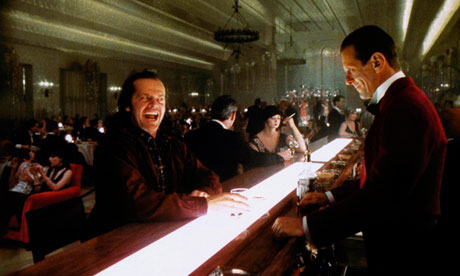
One fellow insists that the film is Kubrick’s great metaphor for the Holocaust. 1942 was the year the Nazi death machine ramped up, and he finds the number "42" everywhere in "The Shining." Multiply 2x3x7 (Room 237) and you get 42. Wendy walks past 6 crates of 7-Up. Danny wears a shirt emblazoned "42." There are 42 cars in the Overlook parking lot. Etc. etc.
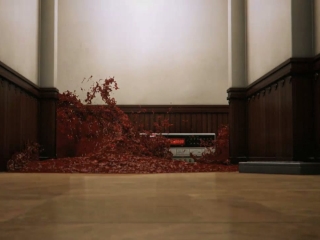
A woman theorist believes that Jack is a Minotaur. Indeed, in a certain light and a certain angle, Jack Nicholson’s head does look very much like a bull.
Like many of the theorists, this woman seems to keep a model of the Overlook’s floor-plan in her head like a 3D tic-tac-toe board. They are aware of how the characters' movements on the various levels line up, and even how each level represents a character’s level of consciousness, so that when Danny rolls his big wheel around on different floors he's rolling through Wendy's consciousness or Jack's.
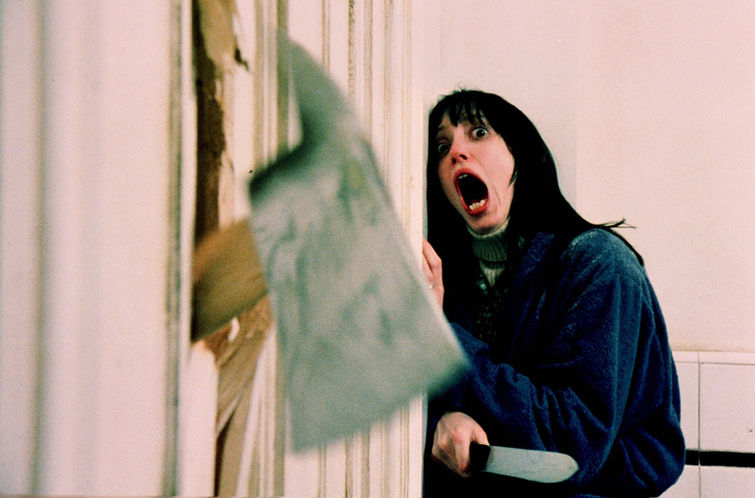
She draws our attention to the “impossible window” in Ullman’s office. There is no way it could be there: there is a hallway behind the office. One reason I had never noticed details like this--the supernaturally glowing window--is that I’ve always seen “The Shining” on a TV screen. The imagery from “The Shining” in “Room 237” is glorious and demands to be seen on a big screen. It is like being immersed in the film for the first time. The gilded grand ballroom, the Gold Room, glows with a ghostly grandeur. (We learn that Kubrick read deeply about Colorado history and the gold rush before shooting.) For the first time we can see the red Volkswagen crushed under the semi that Halloran passes on the highway. (Kubrick did this, we learn, as a way to show that he has "crushed" his source material, the Stephen King novel: in the book, Jack drives a red VW. In the film he drives a yellow one.)
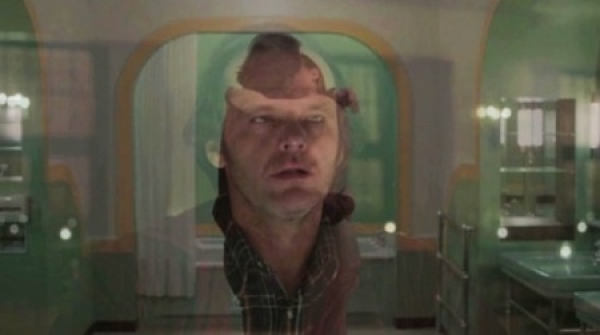
One theorist proclaims that "The Shining" is a film that is "meant to be played both forwards and backwards at the same time." In an extraordinary sequence, the filmmakers try it out: we watch the film played backwards and forwards in a double exposure blend. This can lead to fascinating dialectial results: Danny watching TV mashes up with Jack and Grady's murderous bathroom discussion [they are controlling Danny, you see]. When Danny stands, he appears to dangle between the two men [he is their pawn]. The TV frames the men’s mouths [they are speaking to him] and the windows behind the TV frame their faces [they appear to be wearing masks].
All coincidence, you say. And maybe so. But what gives it all that tiny, tantalizing spark of plausibility is the fact that Stanley Kubrick really did never put anything in the frame by accident. He absorbed everything he saw and read and was able to distill it in his art in this very pure form that seems to tap into deep underyling patterns, something primal and collective in human life. And he really did treasure balance and harmony and symmetry. Hey, maybe he did orchestrate "The Shining" so it could be played forward and backward at the same time. There's that playful glint in his eye that won't let you discount the possibility entirely.
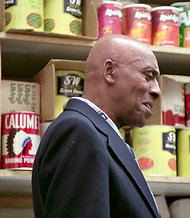
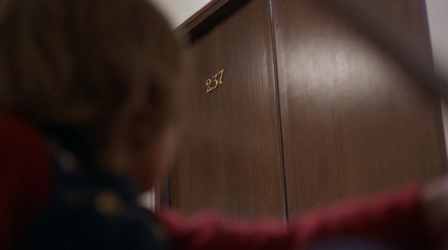
Rating: ****
--April 17, 2013
Key to ratings:
***** (essential viewing)
**** (excellent)
*** (worth a look)
** (forgettable)
* (rubbish!!)


 Scott Pfeiffer
Scott Pfeiffer
Reader Comments (1)
****